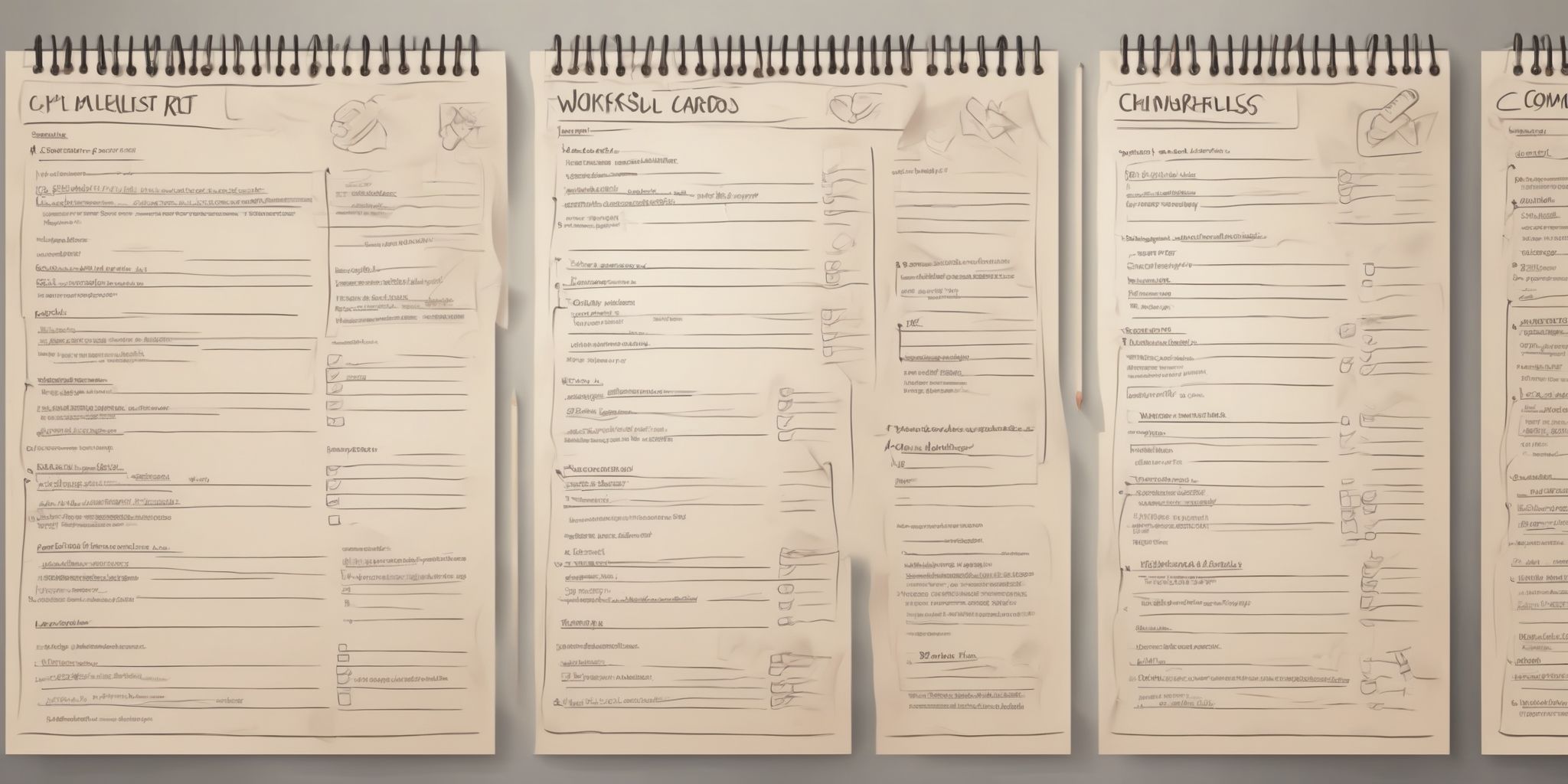Exploring Different Methods of Tax Planning
Tax planning is that financial jigsaw puzzle we all strive to solve, where the objective is to legally reduce our tax burden without losing any vital pieces. However, the methods employed to achieve this can be as diverse as the individuals seeking to unravel the complexities of the tax system. From traditional strategies to innovative approaches, there are countless ways to navigate the labyrinthine world of tax planning.
In this article, we will embark on an exploration of some of these methods, shedding light on the creative and practical ways individuals and businesses can shape their tax bills to their advantage. So, grab your magnifying glass and join us on this exciting journey through the ever-evolving landscape of tax planning techniques.
Understanding Tax Planning
Tax planning is the process of legally reducing one's tax liability by utilizing various strategies and methods. It involves understanding relevant tax laws, regulations, and exemptions to optimize financial outcomes. For instance, leveraging tax deductions can help minimize taxable income by deducting eligible expenses. Strategic timing of income and expenses can also play a role in reducing overall tax burden.
By taking advantage of tax credits and incentives, individuals and businesses can further optimize their tax planning. Understanding tax planning ensures individuals and businesses make informed decisions to maximize tax efficiency and minimize tax obligations.
Importance of Tax Planning
Tax planning methods play a crucial role in managing your tax liabilities and optimizing your financial situation. By strategically organizing your finances and taking advantage of available deductions, credits, and incentives, you can reduce your overall tax burden. Tax planning empowers individuals and businesses to make informed decisions that align with their financial goals while staying compliant with tax laws.
For example, maximizing deductions for business expenses can help reduce taxable income, while deferring income and accelerating expenses can result in significant tax savings. By understanding the importance of tax planning and implementing effective strategies, individuals and businesses can achieve greater financial efficiency and maximize their after-tax income.
Tax Planning Methods
Leveraging Tax Deductions
Leveraging Tax Deductions is a key tax planning method that can significantly reduce your taxable income. By strategically utilizing business expenses, you can maximize deductions and lower your tax liability.
For example, deducting expenses such as office supplies, travel, and professional services can help reduce your overall taxable income. Similarly, individuals can explore deductions like mortgage interest, medical expenses, and charitable contributions. By taking advantage of these deductions within the limits set by tax laws, you can optimize your tax savings and increase your disposable income. It's important to keep accurate records and consult with a tax professional to ensure compliance with applicable tax regulations.
Utilizing Business Expenses
One effective tax planning method is to strategically utilize business expenses. By maximizing deductible expenses, businesses can reduce their taxable income and ultimately lower their tax liability. Examples of deductible business expenses include costs related to advertising, travel, office supplies, and employee wages. For instance, a business can deduct the expenses incurred for attending industry conferences or purchasing necessary equipment for operations.
Careful tracking and documentation of these expenses is essential to ensure compliance with tax regulations. Utilizing business expenses effectively allows businesses to optimize their tax situation and retain more of their earnings for growth and investment.
Maximizing Deductions for Individuals
Maximizing deductions for individuals is a key tax planning method. By taking advantage of available deductions, individuals can reduce their taxable income and ultimately lower their tax liability. One common deduction is the standard deduction, which allows individuals to subtract a fixed amount from their taxable income.
Additionally, itemized deductions, such as mortgage interest, state and local taxes, and charitable contributions, can also be used to reduce taxable income.
For example, individuals who own a home can deduct the interest paid on their mortgage. It is important for individuals to review and understand the various deductions available to them in order to optimize their tax planning strategy.
Strategic Timing of Income and Expenses
One effective tax planning method is strategically timing income and expenses. By deferring income to a future tax year, individuals and businesses can potentially lower their current tax liability. This could involve delaying the receipt of bonus payments or income from investments until the following year. On the other hand, accelerating expenses, such as prepaying deductible expenses before year-end, may help reduce taxable income.
For example, paying property taxes or making charitable contributions in December instead of January can affect the tax implications. Careful consideration of timing can optimize tax savings and increase overall financial efficiency.
Deferring Income
Deferring income is a effective tax planning method that involves postponing the receipt of income to a future tax year. By deferring income, individuals and businesses can potentially reduce their current taxable income, resulting in lower tax liabilities. This strategy is commonly used by self-employed individuals who have the flexibility to delay invoicing or receiving payments until the following year.
For example, if a freelancer has completed a project in December, they can choose to delay invoicing until January of the next year, thereby shifting the income to a lower tax bracket. However, it's important to carefully analyze your financial situation and consult with a tax professional to ensure that deferring income aligns with your overall tax strategy.
Accelerating Expenses
One effective tax planning method is accelerating expenses. By shifting the timing of deductible expenses to the current tax year, individuals and businesses can lower their taxable income, resulting in a reduced tax liability.
For example, prepaying certain expenses such as rent or subscriptions before year-end can accelerate deductions.
Additionally, purchasing necessary equipment or supplies before the end of the fiscal year can allow businesses to deduct the expenses in the current year. Accelerating expenses can be a strategic way to maximize tax savings and improve cash flow. However, it is important to consider the potential impact on future tax years and consult with a tax professional for guidance tailored to your specific circumstances.
Utilizing Tax Credits and Incentives
One effective tax planning method is to take advantage of available tax credits and incentives. These can help reduce your overall tax liability. Tax credits provide a direct reduction in the taxes you owe, while incentives encourage specific behaviors by providing tax benefits.
For example, you may be eligible for a tax credit for installing energy-efficient equipment in your home or utilizing renewable energy sources. On the other hand, tax incentives may be offered to businesses that invest in research and development or engage in job creation initiatives. By researching and leveraging these opportunities, you can optimize your tax strategy and potentially save a significant amount of money.
Exploring Available Tax Credits
When exploring tax planning methods, one effective approach is to explore available tax credits. Tax credits can significantly reduce your tax liability by directly reducing the amount of tax you owe. These credits are available for various purposes, such as education, energy-efficient investments, or providing financial support for low-income individuals.
For example, the American Opportunity Tax Credit offers a credit for qualified education expenses, while the Earned Income Tax Credit provides support to low-income earners. By understanding and utilizing these available tax credits, individuals and businesses can maximize their tax savings and achieve greater overall financial efficiency.
Tax Incentive Programs for Businesses
One effective tax planning method for businesses is taking advantage of tax incentive programs. These programs are designed to provide certain benefits or reductions in taxes for qualifying businesses. Examples of tax incentives include tax credits for research and development, tax deductions for investments in specific industries, and tax breaks for hiring and training employees in certain regions. By actively seeking and understanding these incentive programs, businesses can minimize their tax liability and potentially increase their cash flow. This strategic approach allows companies to reinvest the saved funds into further growth and development, ultimately enhancing their overall financial position.
Structuring Investments Effectively
Structuring investments effectively is one of the crucial tax planning methods. By utilizing tax-advantaged accounts such as IRAs or 401(k)s, individuals can defer taxes on their investments until retirement. Investing in tax-free municipal bonds can also provide tax-exempt income. Diversifying investments across different asset classes can help minimize taxes through capital gains strategies and offsetting losses.
For example, selling stocks with high gains and offsetting them with stocks that have experienced losses. It is important to work with a financial advisor to ensure investment decisions align with your tax planning goals and overall financial situation.
Utilizing Tax-Advantaged Accounts
One effective tax planning method is to make use of tax-advantaged accounts. These accounts are specifically designed to provide tax benefits and help individuals save and invest for the future. Examples include Individual Retirement Accounts (IRAs) and Health Savings Accounts (HSAs).
Contributions to these accounts may be tax-deductible or allow for tax-free growth, and withdrawals can be made without incurring additional taxes under certain conditions. By strategically using these accounts, individuals can reduce their taxable income and potentially build wealth over time.
For instance, contributing to a traditional IRA can lower taxable income for the current year, while a Roth IRA provides tax-free withdrawals in retirement. HSAs offer triple tax advantages, allowing tax-free contributions, growth, and withdrawals for qualified medical expenses.
Investing in Tax-Free Municipal Bonds
Investing in tax-free municipal bonds is a tax planning method that can provide individuals with potential tax advantages. These bonds are issued by state and local governments and are exempt from federal income tax. This means that the interest income earned from these bonds is not subject to federal taxes. By investing in tax-free municipal bonds, individuals can potentially lower their overall tax liability and increase their after-tax returns.
For example, if an individual is in a high tax bracket, investing in tax-free municipal bonds can allow them to keep a larger portion of their investment income. It's important to note that the tax benefits of municipal bonds vary depending on an individual's tax situation, so it's advisable to consult with a tax professional to determine if this method is suitable for you.
Choosing the Right Method for You
Consulting with a Tax Professional
Consulting with a tax professional can provide valuable insights and guidance when exploring tax planning methods. These professionals have in-depth knowledge of tax laws and regulations, allowing them to offer personalized advice tailored to your specific financial situation. They can help you identify tax-saving opportunities, navigate complex tax codes, and ensure compliance with tax requirements.
Considering Your Specific Financial Situation
When exploring tax planning methods, it is important to take into account your unique financial circumstances. Factors such as your income level, investments, and goals can greatly influence the most effective approach. For instance, if you are a high-income earner, focusing on tax-advantaged accounts or investment strategies could help minimize your tax liability. On the other hand, if you are a business owner, leveraging deductions and credits relevant to your industry can be advantageous. By tailoring your tax planning to your specific financial situation, you can optimize your tax savings and make informed decisions aligned with your objectives.
Over to you
Tax planning is an essential part of managing finances, and this article explores various methods to effectively navigate the complex world of taxes. The author discusses important strategies such as income shifting, utilizing tax credits and deductions, and taking advantage of tax-advantaged accounts. The article emphasizes the significance of proactive planning and staying informed about tax laws and regulations to maximize savings.
By understanding and implementing these different approaches, individuals and businesses can optimize their tax situations and potentially reduce their tax liabilities.


